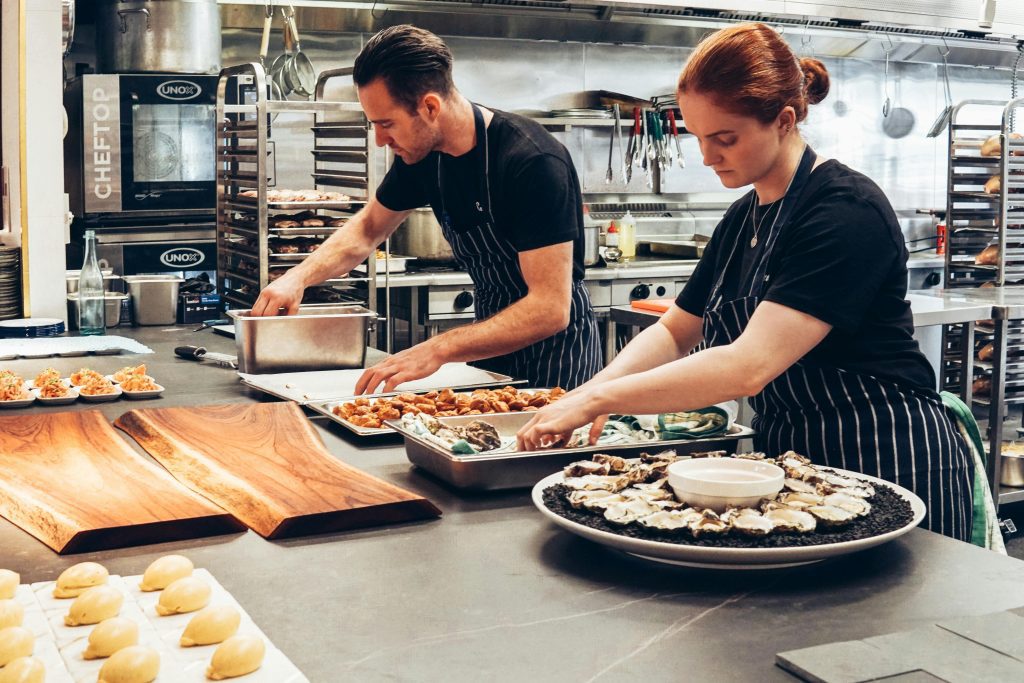“Essential Tips for Running a Successful Restaurant”
Running a successful restaurant involves more than just serving good food; it requires effective management, strategic planning, and a focus on customer satisfaction. Here are essential tips for running a successful restaurant:
### **1. **Develop a Clear Concept**
**a. Define Your Concept**
– **Theme and Cuisine**: Decide on the type of cuisine and overall theme of your restaurant. This could be fine dining, casual dining, fast casual, or a specific type of cuisine like Italian, Mexican, or vegan.
– **Target Audience**: Understand who your target customers are and what they want. Tailor your menu and ambiance to meet their preferences.
**b. Create a Unique Selling Proposition (USP)**
– **Differentiation**: Identify what sets your restaurant apart from competitors. This could be unique menu items, exceptional service, or a distinctive dining experience.
### **2. **Create a Business Plan**
**a. Outline Your Goals**
– **Objectives**: Set clear, achievable goals for your restaurant, such as revenue targets, customer satisfaction, and growth plans.
**b. Financial Projections**
– **Budgeting**: Develop detailed financial projections, including startup costs, operating expenses, and revenue forecasts.
– **Funding**: Determine how you will finance your restaurant, whether through personal savings, loans, or investors.
**c. Market Research**
– **Competition Analysis**: Research local competitors to understand their strengths and weaknesses.
– **Customer Preferences**: Conduct surveys or focus groups to gather insights into what potential customers are looking for.
### **3. **Location and Layout**
**a. Choose the Right Location**
– **Visibility and Accessibility**: Select a location that is easily accessible and visible to your target market. Consider factors like foot traffic, parking, and nearby businesses.
– **Lease Terms**: Negotiate favorable lease terms and ensure the space meets your restaurant’s needs.
**b. Design an Effective Layout**
– **Flow and Efficiency**: Plan the layout to optimize the flow of both customers and staff. Ensure a smooth process from kitchen to dining area.
– **Ambiance**: Design the interior to reflect your concept and create an inviting atmosphere. Pay attention to seating arrangements, lighting, and décor.
### **4. **Menu Development**
**a. Craft a Compelling Menu**
– **Variety and Quality**: Offer a well-balanced menu with a variety of options that cater to different tastes and dietary needs.
– **Pricing Strategy**: Price your menu items competitively while ensuring you cover costs and achieve desired profit margins.
**b. Source Ingredients**
– **Quality Suppliers**: Build relationships with reliable suppliers who provide high-quality ingredients. Consider sourcing locally where possible to ensure freshness.
**c. Menu Updates**
– **Seasonal Changes**: Update your menu periodically to reflect seasonal ingredients and keep offerings fresh and exciting.
– **Customer Feedback**: Monitor customer feedback and adjust your menu based on their preferences and suggestions.
### **5. **Staffing and Training**
**a. Hire the Right Staff**
– **Recruitment**: Hire skilled and motivated staff for various roles, including chefs, servers, and management. Look for individuals who align with your restaurant’s values and culture.
**b. Provide Comprehensive Training**
– **Service Standards**: Train staff on service standards, menu knowledge, and handling customer complaints. Consistent training ensures high-quality service.
– **Health and Safety**: Educate staff on food safety, hygiene practices, and proper handling of equipment to prevent accidents and maintain standards.
**c. Foster a Positive Work Environment**
– **Motivation and Retention**: Create a supportive and positive work environment to keep staff motivated and reduce turnover. Offer incentives, recognize achievements, and promote team collaboration.
### **6. **Marketing and Promotion**
**a. Develop a Marketing Strategy**
– **Branding**: Establish a strong brand identity through your logo, website, and social media presence.
– **Online Presence**: Utilize social media platforms, email marketing, and online reviews to reach potential customers and engage with your audience.
**b. Local Advertising**
– **Community Engagement**: Participate in local events, sponsor community activities, and collaborate with local businesses to increase visibility.
– **Promotions**: Offer special deals, discounts, and loyalty programs to attract and retain customers.
**c. Monitor and Adapt**
– **Analytics**: Use analytics tools to track the effectiveness of your marketing efforts and adjust strategies based on performance data.
### **7. **Customer Service Excellence**
**a. Focus on Customer Experience**
– **Service Quality**: Train staff to provide exceptional service and create a welcoming atmosphere for guests.
– **Feedback Mechanism**: Encourage and respond to customer feedback to continually improve the dining experience.
**b. Handle Complaints Professionally**
– **Resolution**: Address complaints promptly and professionally. Use feedback as an opportunity to make improvements and demonstrate your commitment to customer satisfaction.
### **8. **Financial Management**
**a. Monitor Financial Performance**
– **Accounting Systems**: Implement a robust accounting system to track income, expenses, and profitability.
– **Cost Control**: Regularly review costs and identify areas where you can reduce expenses without compromising quality.
**b. Inventory Management**
– **Stock Control**: Keep track of inventory levels to prevent overstocking or shortages. Implement a system for ordering and managing supplies efficiently.
**c. Budget and Forecast**
– **Planning**: Create and stick to a budget. Regularly update financial forecasts to reflect changes in revenue and expenses.
### **9. **Compliance and Regulations**
**a. Adhere to Local Regulations**
– **Licenses and Permits**: Ensure you have all necessary licenses and permits to operate legally. This may include food service licenses, health permits, and liquor licenses.
**b. Health and Safety Standards**
– **Regulations**: Comply with health and safety regulations to maintain a safe and sanitary environment for both staff and customers.
### **10. **Continuous Improvement**
**a. Evaluate Performance**
– **Review Metrics**: Regularly assess key performance indicators (KPIs) such as sales, customer satisfaction, and employee performance.
– **Benchmarking**: Compare your performance against industry standards and competitors to identify areas for improvement.
**b. Innovate and Adapt**
– **Stay Current**: Keep up with industry trends and customer preferences. Be open to innovation and adapt your offerings as needed to stay competitive.
**c. Plan for Growth**
– **Expansion**: Consider opportunities for growth, such as opening additional locations or diversifying your menu.
### **Summary**
Running a successful restaurant requires a combination of clear vision, effective management, and a relentless focus on customer satisfaction. By developing a solid concept, managing finances carefully, training staff effectively, and continuously improving, you can create a thriving restaurant that attracts loyal customers and stands out in the competitive foodservice industry.









